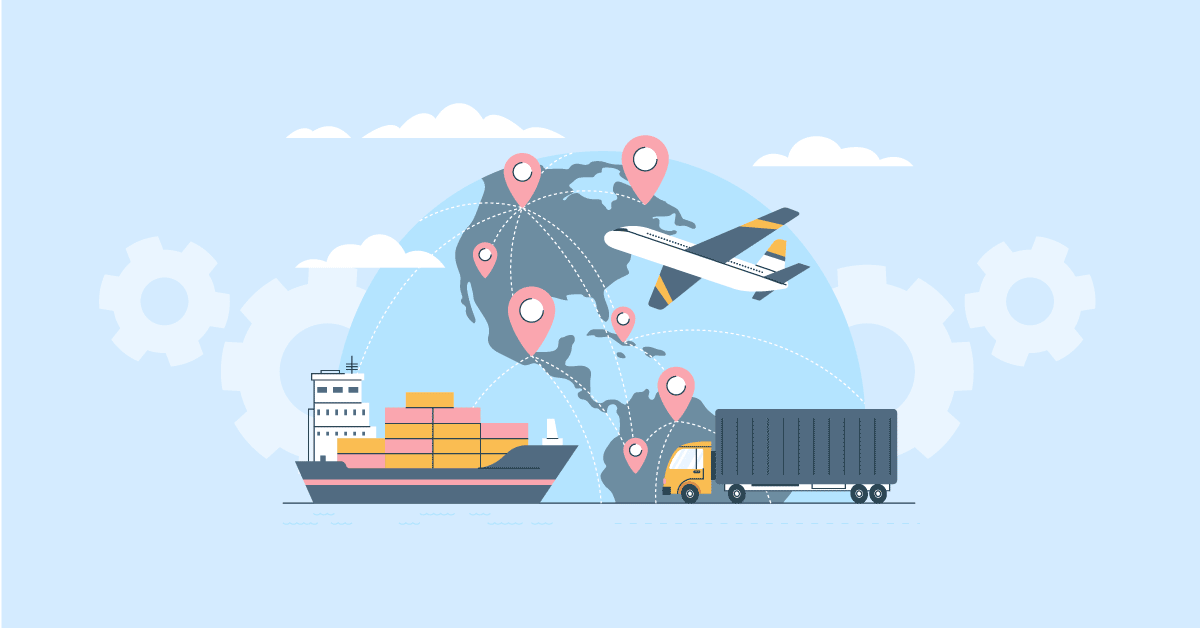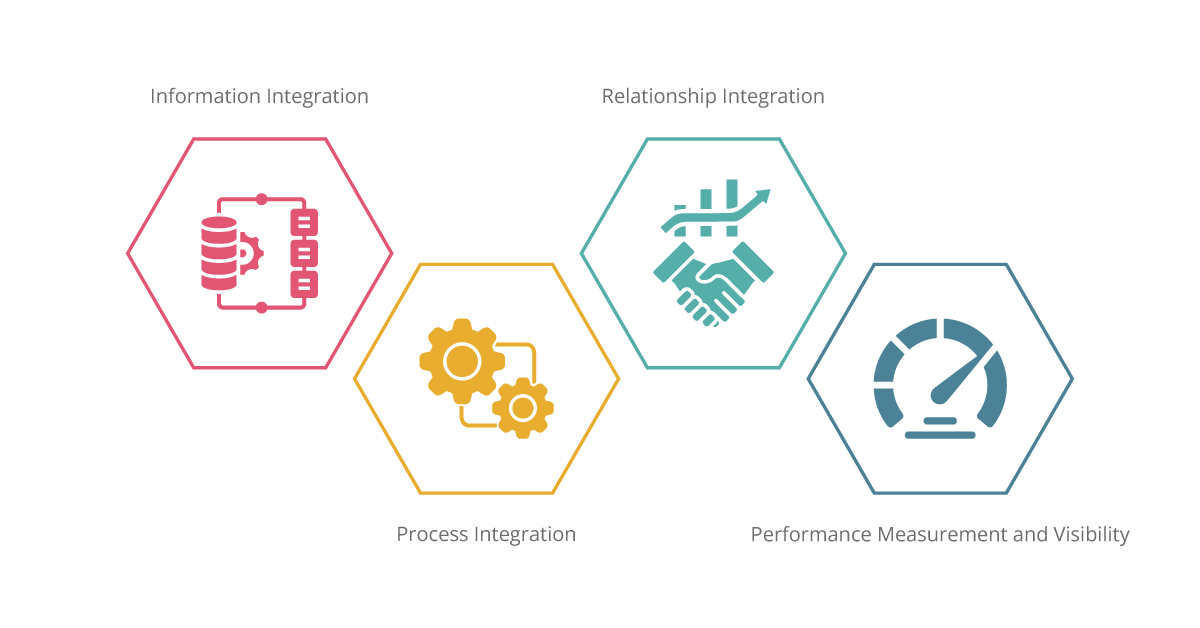The dynamics of today’s business landscape demand a synchronized and collaborative approach to supply chain management. In an era where businesses are interconnected on a global scale, achieving seamless integration within the supply chain is paramount to staying competitive and meeting customer demands. By improving visibility and fostering collaboration among supply chain stakeholders, organizations can optimize operations, reduce costs, and enhance customer satisfaction. In this article, we explore the significance of achieving supply chain integration and provide valuable insights on how organizations can improve visibility and collaboration to achieve this integration successfully.
Aonflow iPaaS – Free for First 3 Months!
Build and run up to 1,500 transactions monthly with no cost. No payment info needed!
Understanding Supply Chain Integration
It refers to the process of connecting and aligning different stakeholders, systems, and processes within a supply chain to enable seamless coordination and collaboration. It involves the integration of various functions, including procurement, manufacturing, logistics, distribution, and customer service, to optimize the flow of goods, services, and information throughout the supply chain network.
Supply chain integration aims to eliminate information silos, streamline processes, and enhance visibility across the entire supply chain, from raw material suppliers to end customers. It enables real-time access to accurate data, improves communication, and enables more efficient decision-making, ultimately leading to improved operational efficiency, reduced costs, and enhanced customer satisfaction.
Key Elements of Supply Chain Integration
Information Integration:
Supply chain integration involves the integration of information systems, databases, and technologies to enable the seamless flow of data across different stages of the supply chain. This includes sharing critical information, such as demand forecasts, inventory levels, production schedules, and shipment tracking, in real time. Integrated information systems allow stakeholders to have a unified view of the supply chain, facilitating collaborative planning and decision-making.
Process Integration:
Process integration focuses on aligning and harmonizing supply chain processes across various functions and organizations. It involves the standardization and integration of workflows, procedures, and best practices to eliminate redundancies, improve efficiency, and reduce errors. Integrated processes enable the smooth transition of goods and services from one stage to another, ensuring timely delivery and minimizing disruptions.
Relationship Integration:
Supply chain integration emphasizes building strong and collaborative relationships among supply chain partners, including suppliers, manufacturers, distributors, and customers. It involves establishing trust, fostering open communication, and sharing information and resources to achieve mutual goals. Relationship integration enables proactive problem-solving, joint decision-making, and the creation of win-win scenarios within the supply chain network.
Performance Measurement and Visibility:
Supply chain integration requires the establishment of performance metrics and the implementation of systems to monitor and measure key performance indicators (KPIs) across the supply chain. This includes metrics related to on-time delivery, inventory turnover, lead times, quality, and customer satisfaction. Enhanced visibility into supply chain performance allows stakeholders to identify bottlenecks, address inefficiencies, and continuously improve the overall supply chain performance.
The Importance of Supply Chain Integration
Supply chain integration refers to the strategic alignment and coordination of various entities involved in the supply chain to achieve common goals. It entails breaking down silos and fostering collaboration among stakeholders to enhance communication, streamline processes, and drive operational excellence. The benefits of achieving supply chain integration are manifold, including:
Enhanced Visibility: Improved visibility across the supply chain enables organizations to gain real-time insights into inventory levels, production status, and shipment tracking. This visibility allows for proactive decision-making, better demand forecasting, and reduced lead times.
Example: Retail giant Walmart successfully implemented supply chain integration, enabling them to monitor inventory levels in real time across their stores and distribution centers. This enhanced visibility helped them optimize stock levels, reduce out-of-stock situations, and improve customer satisfaction. For instance, when a particular item is running low in a store, Walmart’s integrated system automatically generates a replenishment order to the distribution center, ensuring the item is restocked promptly.
Increased Efficiency: Integration leads to smoother information flow and process synchronization, resulting in enhanced operational efficiency. By eliminating manual data entry, reducing errors, and automating routine tasks, organizations can streamline their supply chain processes and improve overall productivity.
Example: Automotive manufacturer Tesla implemented an integrated supply chain system that connects production, logistics, and sales departments. This integration enabled them to optimize production planning, improve order fulfillment, and achieve significant cost savings. Through their integrated system, Tesla can synchronize the production schedule with customer demand and logistics, ensuring timely delivery of vehicles to customers.
Enhanced Customer Service: The integration allows organizations to have better visibility into customer demand and order status, enabling them to respond quickly to customer inquiries, provide accurate delivery estimates, and improve overall customer service. It also enables customization and personalization of products and services based on customer preferences and needs.
Reduced Costs: Supply chain integration helps in optimizing inventory levels, minimizing stockouts, and reducing carrying costs. It enables organizations to synchronize production and distribution activities, resulting in cost savings through reduced lead times, improved demand forecasting, and efficient utilization of resources.
Increased Flexibility and Responsiveness: The integration enables organizations to respond quickly to changes in customer demand, market conditions, or supply disruptions. It facilitates the exchange of real-time information, enabling agile decision-making, and proactive supply chain management.
Collaboration and Innovation: Supply chain integration fosters collaboration and innovation by bringing together different stakeholders, sharing knowledge and expertise, and encouraging joint problem-solving. It facilitates the identification of new opportunities, the development of new products or services, and the implementation of innovative supply chain practices.
Aonflow is the leading integration platform.
You can kick-start by integrating your first-ever workflow in just a matter of minutes.
Enhancing Visibility in the Supply Chain
A. Real-time Tracking and Traceability
Implementing technologies such as Internet of Things (IoT) sensors, radio-frequency identification (RFID), and barcode scanning allows organizations to track and trace products at every stage of the supply chain. This real-time visibility helps identify bottlenecks, monitor quality, and ensure compliance with regulations.
Example: DHL, a global logistics provider, employs IoT-enabled sensors and RFID tags to track shipments in real time. This visibility enables them to identify potential delays, optimize routes, and ensure the integrity of perishable goods. For instance, DHL’s integrated system can monitor the temperature and humidity of sensitive pharmaceutical shipments, ensuring they are stored and transported within the required conditions.
B. Data Analytics and Predictive Insights
Leveraging advanced analytics and machine learning algorithms on supply chain data can provide valuable insights for decision-making. By analyzing historical and real-time data, organizations can identify patterns, forecast demand, and optimize inventory levels.
Example: Amazon, the e-commerce giant, utilizes predictive analytics to anticipate customer demand and optimize its inventory management. By analyzing vast amounts of data, including historical sales, browsing patterns, and external factors like weather conditions, Amazon can proactively adjust its stock levels to meet customer expectations. Through its integrated analytics system, Amazon can identify trending products, forecast demand fluctuations, and adjust its inventory accordingly, minimizing stockouts and maximizing sales.
Fostering Collaboration in the Supply Chain
A. Supplier Relationship Management
Establishing strong relationships with suppliers is crucial for achieving supply chain integration. Collaboration platforms and tools enable seamless communication, sharing of forecasts, and joint decision-making, resulting in reduced lead times and improved supplier performance.
Example: Nike, the athletic footwear and apparel company, implemented a Supplier Relationship Management (SRM) system to enhance collaboration with their global supplier network. This integration enabled Nike to share real-time demand information, optimize production planning, and respond quickly to market fluctuations. By providing suppliers with access to the integrated system, Nike can ensure that suppliers are aware of the latest demand trends, enabling them to adjust their production schedules and inventory levels accordingly.
B. Partnering with Third-party Logistics Providers
Engaging with third-party logistics providers (3PLs) can bring expertise and specialized capabilities to the supply chain. By outsourcing logistics operations to reliable partners, organizations can focus on their core competencies while leveraging the 3PL’s infrastructure, technology, and industry knowledge.
Example: Procter & Gamble (P&G), a consumer goods company, collaborates with 3PLs to streamline their supply chain. This partnership allows P&G to leverage the expertise of logistics providers, optimize transportation routes, and enhance customer service. By integrating their systems with those of their logistics partners, P&G can exchange real-time information on inventory levels, shipment tracking, and delivery status, enabling them to proactively manage their supply chain and meet customer expectations.
The Role of iPaaS in Supply Chain Integration
Integration Platform as a Service (iPaaS) plays a vital role in achieving seamless connectivity and collaboration within the supply chain ecosystem. iPaaS enables organizations to integrate diverse systems, applications, and data sources, providing a unified view of the supply chain.
Use Cases of iPaaS in Supply Chain Integration

Order-to-Cash Integration: iPaaS facilitates the integration of order management systems with financial systems, ensuring seamless order processing, invoice generation, and payment reconciliation. For instance, an organization can integrate its e-commerce platform with its accounting software through iPaaS, automating the transfer of order information and streamlining the invoicing and payment processes.
Warehouse Management Integration: iPaaS connects warehouse management systems with enterprise resource planning (ERP) systems, enabling real-time inventory updates, efficient picking and packing processes, and accurate order fulfillment. By integrating their warehouse management system with their ERP system, organizations can automate inventory updates, track product movements, and optimize warehouse operations.
Supplier Integration: iPaaS enables the integration of suppliers’ systems with the organization’s procurement systems, streamlining the exchange of purchase orders, invoices, and inventory information. This integration facilitates seamless collaboration, reduces manual data entry errors, and accelerates procurement processes.
Transportation Management Integration: iPaaS allows organizations to integrate transportation management systems (TMS) with other systems such as order management, warehouse management, and carrier management. This integration provides real-time visibility into shipment status, enables automated routing and scheduling, and facilitates efficient freight management. For example, through Aonflow iPaaS integration, an organization can connect its TMS with its order management system to automatically generate shipping labels, track shipments, and provide customers with accurate delivery estimates.
Demand Planning Integration: iPaaS can integrate demand planning systems with various data sources such as sales data, market trends, and customer feedback. This integration enables organizations to generate more accurate demand forecasts, optimize inventory levels, and improve production planning. By connecting their demand planning system with sales data from multiple channels, organizations can leverage iPaaS to automatically update demand forecasts in real time, ensuring that inventory levels align with customer demand.
Quality Control Integration: iPaaS can integrate quality control systems with other supply chains systems, such as manufacturing execution systems (MES) and inventory management systems. This integration enables real-time monitoring of quality control processes, facilitates the capturing and analysis of quality data, and supports quick corrective actions. Through iPaaS integration, organizations can automate the transfer of quality data from the shop floor to the quality control system, allowing for instant visibility into quality metrics and enabling timely interventions to ensure product quality.
Compliance Management Integration: iPaaS can integrate compliance management systems with various data sources and regulatory databases to ensure adherence to industry-specific regulations and standards. This integration enables organizations to automate compliance checks, track compliance documentation, and streamline regulatory reporting. For instance, iPaaS can connect a compliance management system with regulatory databases to automatically update compliance requirements and monitor compliance status across the supply chain.
Returns Management Integration: iPaaS can facilitate the integration of returns management systems with other supply chain systems, including order management, inventory management, and customer relationship management (CRM) systems. This integration enables seamless handling of product returns, supports efficient reverse logistics processes, and enhances customer satisfaction. By integrating their returns management system with other systems, organizations can automate the returns authorization process, update inventory levels in real-time, and provide customers with visibility into the status of their returns.
Financial Integration: iPaaS can integrate financial systems, such as enterprise resource planning (ERP) and accounting software, with supply chain systems. This integration enables seamless financial processes, such as automating invoice generation, matching payments with orders, and tracking financial transactions related to the supply chain. By connecting financial systems with supply chain systems through iPaaS, organizations can streamline financial operations, improve accuracy in financial reporting, and ensure proper cost allocation.
Risk Management Integration: iPaaS can integrate risk management systems with supply chain systems to proactively identify, assess, and mitigate supply chain risks. This integration allows organizations to monitor risk indicators, analyze historical data, and implement risk mitigation strategies. For instance, by integrating a risk management system with supply chain systems, organizations can track key risk factors such as supplier performance, geopolitical events, and natural disasters, and take necessary actions to mitigate potential disruptions.
Forecasting and Demand Sensing Integration: iPaaS can integrate forecasting and demand sensing systems with various data sources, such as sales data, market trends, and social media analytics. This integration enables organizations to enhance demand forecasting accuracy, identify demand signals in real time, and respond quickly to changing market dynamics. By leveraging iPaaS, organizations can connect their forecasting systems with multiple data sources to gather and analyze data, leading to more accurate demand forecasts and better inventory management decisions.
Sustainability and Environmental Compliance Integration: iPaaS can integrate sustainability and environmental compliance systems with supply chain systems to track and manage environmental impacts throughout the supply chain. This integration enables organizations to monitor and report on sustainability metrics, track carbon emissions, and ensure compliance with environmental regulations. For example, iPaaS can connect a sustainability management system with supply chain systems to capture data on energy consumption, waste generation, and carbon emissions, enabling organizations to identify opportunities for improvement and reduce their environmental footprint.
Product Lifecycle Management Integration: iPaaS can integrate product lifecycle management (PLM) systems with supply chain systems, enabling seamless coordination and collaboration across the entire product lifecycle. This integration facilitates efficient new product introductions, product changes, and end-of-life management. By connecting PLM systems with supply chain systems through iPaaS, organizations can ensure that all stakeholders have real-time visibility into product information, collaborate on design and development processes, and optimize the overall product lifecycle.
Customer Relationship Management (CRM) Integration: iPaaS can integrate CRM systems with supply chain systems to enhance customer-centricity and improve overall customer relationship management. This integration enables organizations to gain insights into customer preferences, track customer orders, and provide personalized service. By connecting CRM systems with supply chain systems, organizations can ensure that customer data is shared seamlessly across departments, enabling efficient order management, timely delivery updates, and proactive customer support.
Compliance and Regulatory Integration: iPaaS can integrate compliance and regulatory systems with supply chain systems to ensure adherence to industry-specific regulations, standards, and certifications. This integration enables organizations to automate compliance checks, track regulatory documentation, and streamline auditing processes. For example, iPaaS can connect compliance systems with supply chain systems to automatically verify that suppliers meet regulatory requirements, track the origin and composition of materials, and ensure compliance with product safety standards.
Supplier Performance Management Integration: iPaaS can integrate supplier performance management systems with supply chain systems to evaluate and monitor supplier performance. This integration enables organizations to track key performance indicators (KPIs), manage supplier contracts, and collaborate with suppliers on continuous improvement initiatives. By connecting supplier performance management systems with supply chain systems, organizations can streamline performance evaluations, identify areas for improvement, and foster collaborative relationships with suppliers.
Social Responsibility Integration: iPaaS can integrate social responsibility and ethical sourcing systems with supply chain systems to promote sustainable and socially responsible practices. This integration enables organizations to track and manage social responsibility metrics, ensure ethical sourcing of materials, and monitor supplier compliance with social and labor standards. Through iPaaS integration, organizations can capture data on suppliers’ social responsibility performance, conduct audits, and implement corrective actions to drive sustainable and ethical supply chain practices.
Strategic Planning and Execution Integration: iPaaS can integrate strategic planning and execution systems with supply chain systems to align supply chain activities with overall business goals and objectives. This integration enables organizations to establish strategic priorities, monitor performance against targets, and make data-driven decisions to optimize the supply chain. By connecting strategic planning and execution systems with supply chain systems through iPaaS, organizations can ensure that supply chain activities are aligned with business strategies, adapt quickly to changing market conditions, and drive continuous improvement.
Conclusion
Achieving supply chain integration is a strategic imperative for organizations aiming to remain competitive in today’s dynamic business environment. By improving visibility and fostering collaboration among stakeholders, organizations can optimize their supply chain operations, reduce costs, and enhance customer satisfaction. Technologies like IoT, data analytics, and iPaaS play a crucial role in enabling this integration and providing organizations with the tools they need to succeed in an increasingly interconnected world. By embracing these strategies and leveraging the power of technology, organizations can build resilient, agile, and efficient supply chains that drive long-term success.
Aonflow iPaaS – Free for First 3 Months!
Build and run up to 1,500 transactions monthly with no cost. No payment info needed!

